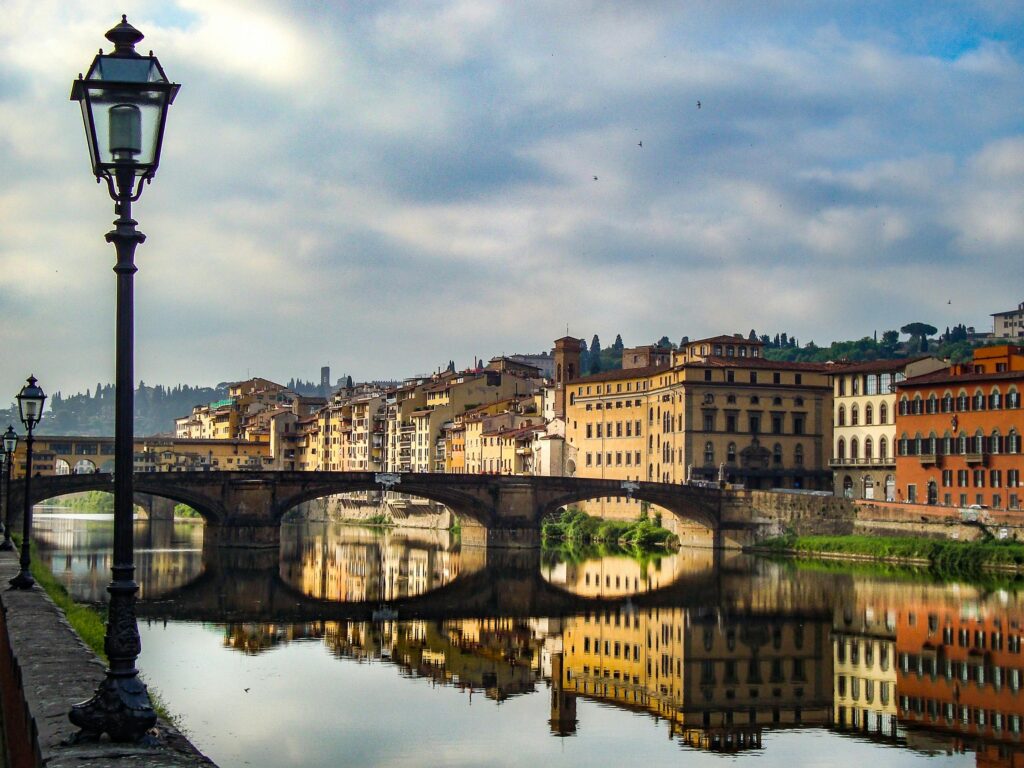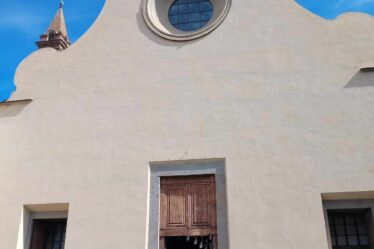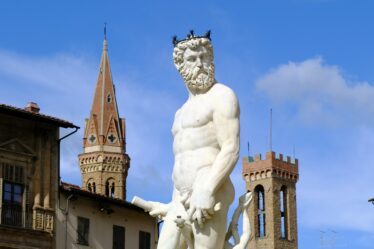
Piazza Signoria and precisely in front of the bronze statue of Cosimo I del Giambologna. We are in the nineteenth century, the many peaks or “you will swap” as they were called in Florence, they had a vice … those near the statue of Cosimo I, hanging and tied the bridle or harnesses to the protruding heads of the bronze bas-reliefs of the Giambologna. A custom that had been going on for a long time, this behavior was eliminated at the root by the Florentine municipality, putting a metal railing around a debt at the statue, such as to prevent this bad custom.
The first thought seeing this railing is obviously the one linked to the safety of the statue, in reality it is instead linked to this small curiosity, putting on the sides of the bas-reliefs we will see the figures and in this case the witnesses to escape from the bas-relief plan, so much so that it seems like children Appenders to attack you in this case the bridle and bags of Badia dei Cavalli. But where does the word swarm from? Most likely of French origin, it takes its name from the Irish religious who settled approximately in the seventh century in the Senna and Marne region. He became famous for his healing.
A legend tells according to a promise of the bishop of Meaux, Fiacre could have had as much land in the Breuil forest as entered the border line that he himself managed to trace in the space of one night; And the young hermit thus had a nice piece of land because when, praying, he put himself at work, the spade miraculously entered the ground with the speed of lightning. In that land Fiacre created luxuriant gardens, vegetable gardens and orchards, so much so that it becomes patron saint of gardeners and gardeners in the following centuries. Next to his humble home he built a hospital and a chapel then later became a monastery, in order to help all those who needed it. After his death, pilgrimages began to the tomb, so much so as to create a real pilgrimage from all parts of France, Belgium and Germany.
Around 1620, a certain Nicole Sauvage thought of combining material interests with the spiritual ones by providing a regular service of special means of transport that led from Paris to the Saint’s tomb. Those means of transport even took the name of “Fiacre”, so much so that still today a certain type of well -known public carriages is called. In the nineteenth century he became the patron saint of the peaks and then taxis and this curiosity was connected to the fact that the French peaks stopped mainly near Saint-Flacre (in the square there was a hotel that had the same name) at the corner of Rue Saint-Martin And impasse Saint-Flacre. In Italy at the end of the 19th and early 20th century, the conductors of public carriages were called “Fcarcherini” while in Florence “Fiaccherai”.
The Holy Fiacre was known in Florence thanks to a French monk who wrote a complete biography of the saint dedicating it to the Grand Duchess Cristina di Lorena (Christine de Lorraine) wife of the Grand Duke Ferdinand the De’Medici. For so much devotion in the central altar of the S.Spirito sacristy inspired by the Pantheon of Rome we can find a altarpiece painted in 1596 by Alessandro Launori dedicated to the Holy Fiacre who heals the sick.
if you like this story of Florence, you can come to visit the city with us. We are providing a free walking tour of Florence, with official tour guide. Our Florence Free Tour start from Minerva Hotel in Santa Maria Novella square, if you are interested please book in advance.


